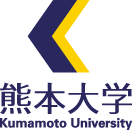生涯健康教育学 Department of Lifelong Health Education
- 部門
- 総合医薬科学部門
- 分野
- 感覚・運動医学
スタッフ
| 教授 | 後藤 知己 tomomi(アットマーク)gpo.kumamoto-u.ac.jp |
|---|
研究テーマ
【研究プロジェクト名および概要】
様々な疾患は、基本的に、遺伝的な要素が強い「体質」と、後天的な「生活習慣」の二つの影響を受けて、発症に至る。たとえ、発症が中高年になってからの疾患であっても、それは、生後の長い年月の生活習慣の影響の積み重ねの結果である。また、若年女性の健康は、次の世代にも影響を与える。生涯健康教育学講座では、近年、我が国に特異的に大きな問題となっている、若年女性の痩せすぎと、骨密度低下を中心に、思春期から中高年に至る生活習慣の改善を目指す教育法開発に取り組んでいる。
欧米諸国と比較して我が国の青年期女性における大きな特徴は、BMI (Body mass index) 18.5未満の痩せすぎに分類される者の比率の高さである。このことは、同年代における健康障害だけでなく、将来、さらには、次世代への悪影響が懸念される。そこで、痩せすぎ者増加の背景を解明するとともに、適切な体型を維持するための青少年教育の開発を目指している。
超高齢化社会の訪れとともに、女性を中心に、今後ますます骨粗鬆症罹患者が増加していくことが懸念されている。その予防には、一生を通じた教育が必要である。青少年期からの生活、運動習慣などの問題を明らかにするとともに、予防教育の開発を目指している。
Basically, the onsets of various diseases are affected by two factors, a “physical constitution” with a strong genetic element and an acquired “lifestyle”. Even if the onsets of those diseases are in the middle-ages or older, those are the results of the cumulative effects of lifestyle habits in the long years after birth. The health of young women also affects the next generation. The Department of Lifelong Health Education is working on the development of an educational method that aims to improve lifestyle habits from adolescence to middle-aged and older. Especially, we focus on extremely underweight young women’s problems and on low bone density of women, which have recently become a major issue in Japanese society.
A major feature of Japanese adolescent women compared to Western countries is the high proportion of people classified as underweight with a BMI (Body mass index) of less than 18.5. This is not only a health hazard in the same age group, but there is concern that it may adversely affect their future and even the next generation. Therefore, we aim to clarify the background of the increase in the number of people who are underweight and to develop youth education to maintain an appropriate body.
With the advent of a super-aging society, it is feared that the number of people with osteoporosis, especially women, will increase in the future. Lifelong education is necessary for the prevention. We aim to clarify problems such as lifestyle and exercise habits from adolescence to old age, and to develop preventive education.

